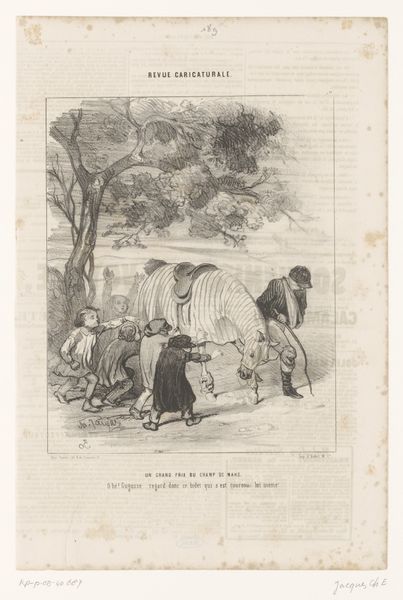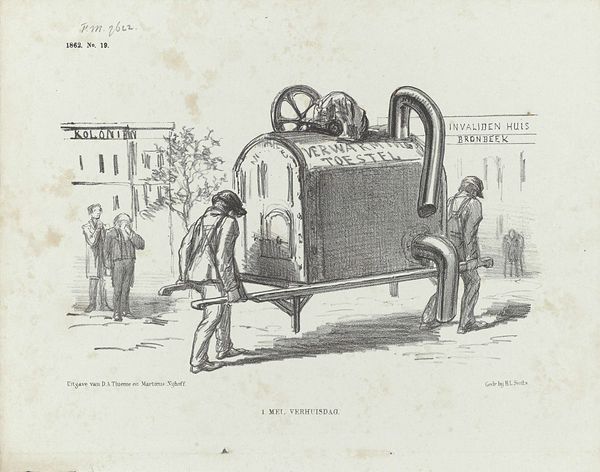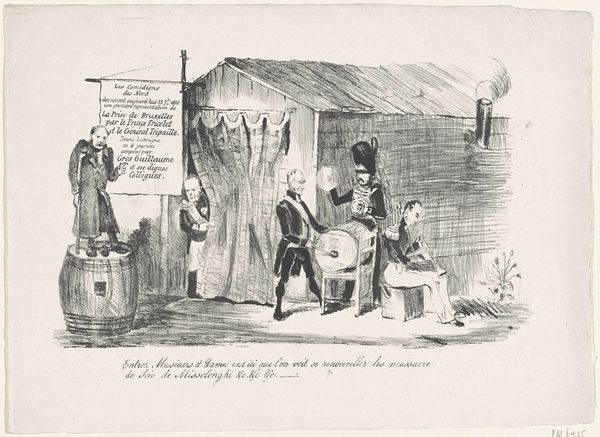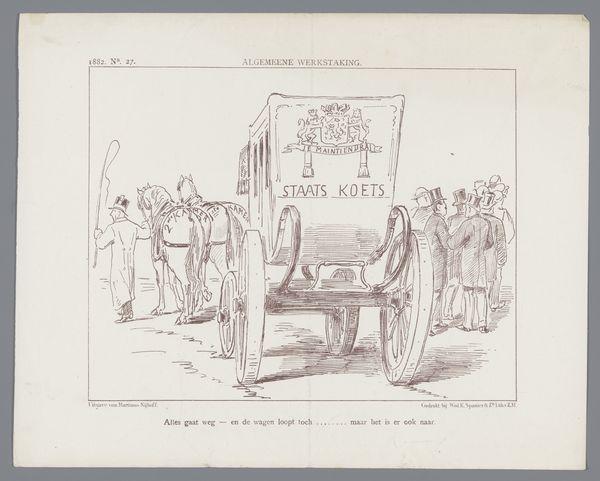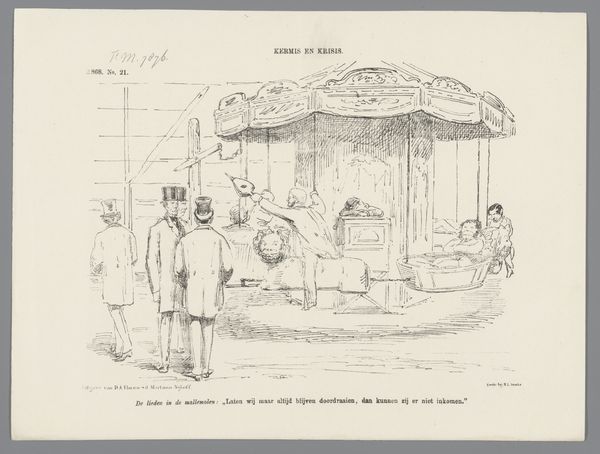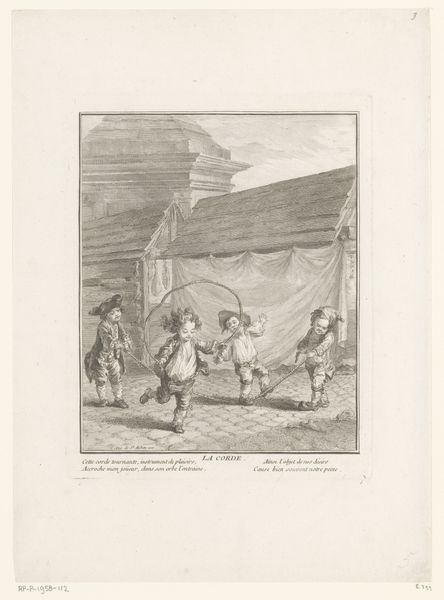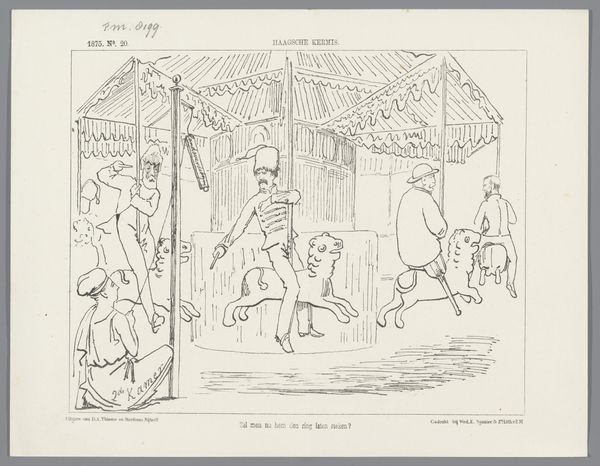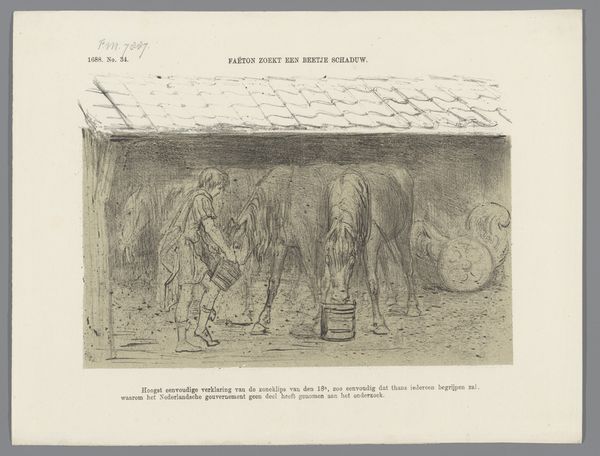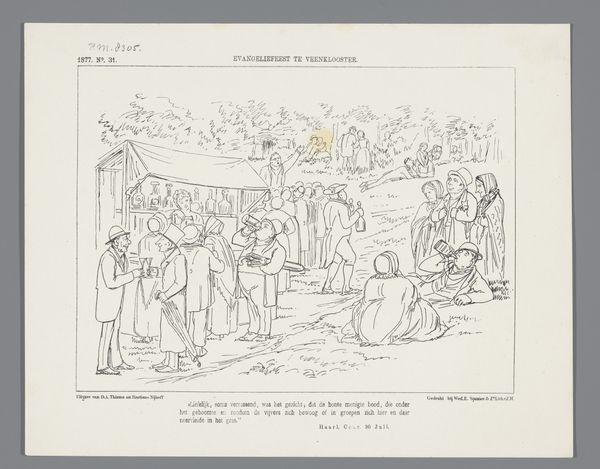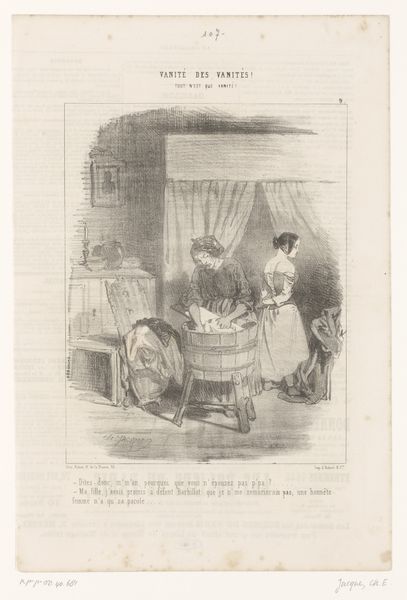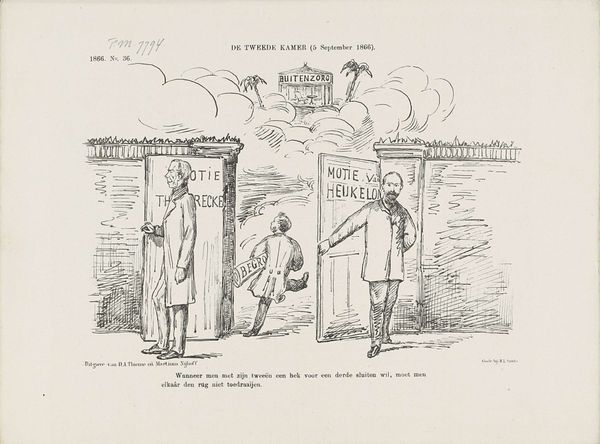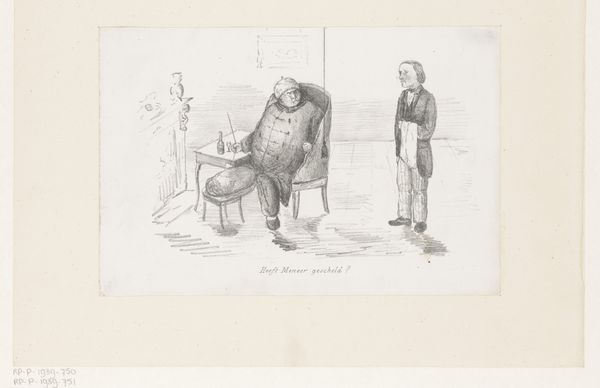
Spotprent naar aanleiding van Nadars ballonvaart te Amsterdam, 1865 1865
0:00
0:00
Dimensions: height 215 mm, width 275 mm
Copyright: Rijks Museum: Open Domain
Curator: Here we have a lithograph from 1865 titled, "Spotprent naar aanleiding van Nadars ballonvaart te Amsterdam," which translates to "Cartoon related to Nadar's balloon flight in Amsterdam." It's by Johan Michaël Schmidt Crans. Editor: My first impression is organized chaos! The tightly rendered lines capture so much frantic energy. Look at all those figures scurrying around. The textures feel so tangible for a print, all rough paper and etched detail. Curator: The balloon itself is a strong symbol, referencing Nadar's pioneering spirit and fascination with photography from above. Note the smaller balloons; I see them as an extension of Nadar's impact on that time, like scattered seeds. Editor: Exactly, and consider the materials – lithography allowed for mass production and dissemination. So, while Nadar explored aerial perspective, this print brought that conversation directly into homes and public spaces through readily available imagery. Who were they meant to reach? Curator: The text in the speech bubbles and on the placards that some characters are holding provides an intriguing narrative layer, perhaps satirical commentary on Dutch politics and religious institutions. One character, for example, carries a sign labeled "Godsdienstlovic School" – a school focused on religious doctrines. The composition becomes a field for competing ideological claims and systems. Editor: You can see it right here in the division of labor and social status represented. One individual appears to oversee, while others are actively engaged in physically hauling around items inscribed with “KABINET.” Are we seeing different levels of societal access depicted through the literal burden each figure carries? What can that distribution tell us about the artist's viewpoint? Curator: These caricatures of specific public figures transform the individuals into instantly recognizable cultural icons of that particular moment in time. As such they take on further weight as commentaries on societal dynamics and its legacy in cultural memory. Editor: Considering the printmaking process, it's clear the artist made choices to emphasize these figures’ roles through the manipulation of line and shading, so this would further engage an audience used to identifying class, labor and production this way. Curator: Looking closely, you also detect themes of power and ambition, played out within the quickly shifting social landscape as illustrated here. It really encapsulates the turbulence and progress of that period. Editor: For me, it speaks to how printmaking made complex ideas material and accessible during a pivotal point in European history. A great reminder that our current media environment shares so much lineage to these humble forms of image production and labor.
Comments
No comments
Be the first to comment and join the conversation on the ultimate creative platform.
